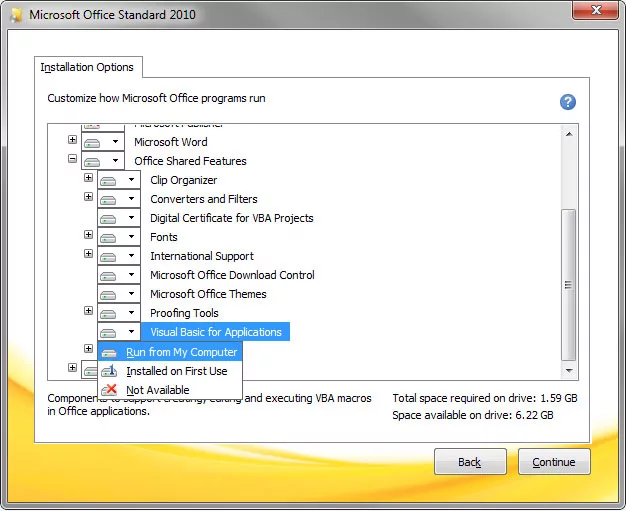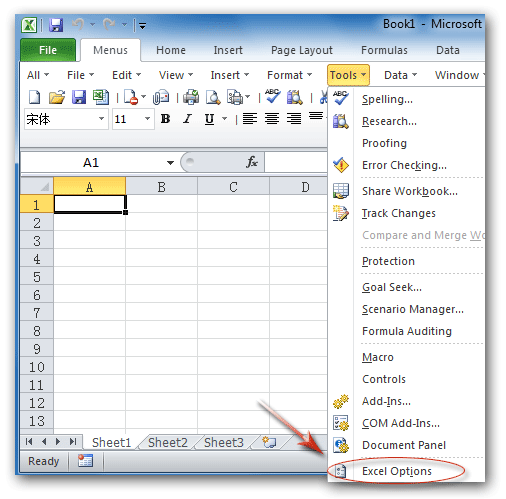
RECOMMENDED: Click here to fix Windows errors and optimize system performance
Office 2010 Setup and Deployment - Free download as Powerpoint Presentation (.ppt /.pptx), PDF File (.pdf), Text File (.txt) or view presentation slides online. Download DirectX End-User Runtime Web Installer This download includes Group Policy Administrative Template (ADM, ADMX/ADML) and Office Customization Tool (OPAX/OPAL) files for Microsoft Office 2010. In Office 2010, the Office Customization Tool (OCT) and the Config.xml file remain the tools for customization of an installation before the deployment option is chosen,” Microsoft noted. Download the Office Deployment Tool from the Microsoft Download Center. After downloading the file, run the self-extracting executable file, which contains the Office Deployment Tool executable (setup.exe) and a sample configuration file (configuration.xml).
Traditionally, Office Service Pack patches cannot be uninstalled without completely uninstalling the Office product. With the release of Office 2010, Service Packs can now be uninstalled from the Control Panel.
Microsoft has now released the Office 2010 SP uninstall tool for Microsoft Office 2010 client applications. This tool is included in a package called Office2010SPUninstall.exe, which is a self-extracting.exe file. The tool itself is a single file called OARPMan.exe. There is no installation for the OARPMan.exe tool.


January 2021 Update:
We now recommend using this tool for your error. Additionally, this tool fixes common computer errors, protects you against file loss, malware, hardware failures and optimizes your PC for maximum performance. You can fix your PC problems quickly and prevent others from happening with this software:
- Step 1 : Download PC Repair & Optimizer Tool (Windows 10, 8, 7, XP, Vista – Microsoft Gold Certified).
- Step 2 : Click “Start Scan” to find Windows registry issues that could be causing PC problems.
- Step 3 : Click “Repair All” to fix all issues.
Office Customization Tool 2010 Download

Administrators or advanced users can use this command line tool to uninstall client patches included in Microsoft Office 2010 Service Packs.
This uninstall tool performs the following steps :
- Uninstall only client updates and not server updates.
- Uninstall Office 2010 Service Pack 2010 only.
Download: Microsoft.
RECOMMENDED: Click here to troubleshoot Windows errors and optimize system performance

I’ll assume most of the people here are techs and just looking for a quick and easy no hassles ‘get me going’ solution. I’ll do my best to deliver. Use the article at TechNet to get full details on what needs to be done if you want to go in-depth.
- Run setup /admin from the CD or local store of the Office 2010 files. This is practically the same straightforwardness found in Office 2007 admin setup. This is the Office Customization Tool (OCT)
- In OCT, be sure to set the key, accept the EULA, and have a display level of None (Suppress Modal checked).
- In OCT, for a silent activation as well (shows first time user opens Office), you can automate this through this as well. Under ‘Add Installations and Run Programs’ add a program. Have it run after Office installs. Details below:
Target: [WindowsFolder]system32cmd.exe
Arguments:/c cscript “C:Program Files (x86)Microsoft OfficeOffice14OSPP.VBS” /act
*Tip* Run cscript “C:Program Files (x86)Microsoft OfficeOffice14OSPP.VBS” to look at all the arguments of this utility.
*Note* This will have to be adjusted per O/S. Alternatively, you can create additional commands, so long as one calls the correct location it will work. Unfortunately using [ProgramFilesFolder] will not translate when the command is run! - Save the MSP file when done configuring, ideally this should go into the Updates folder.
- To install run setup /adminfile Updates/MyFile.MSP. Voila.
IF you get a selection of items to install still, you can get around this by targeting a certain config.xml file to force starting that particular program. You can adjust the call to setup.exe like this:
setup /adminfile Updates/MyFile.MSP /config ProPlus.WW/config.xml
Keep in mind, the above will only work if you are trying to install Office Pro, if you’re attempting something else, you’ll have to point to the other folder containing the correct config.xml. Quotes can be used above, and must be used if you have spaces anywhere within the two paths.
Suppress Modal
I’ve spent too much time than I want to admit trying to get Office to activate. IF the Suppress Modal is active, it may stop other programs from running. I’ve tried different ways of running batch files and none ran, even though the log file in %temp% showed “executing command path: ‘c:test.bat'” or whatever other batch. However using cmd /c in the fashion I have, it ran with no problems even with suppress modal being active.
Quote from Microsoft’s Article
In enterprise deployments, we recommend that you set Display level to None to ensure that Setup runs silently, to prevent prompting users to enter information, and to prevent the installation from waiting for any user interaction, including when files are being used. Setting Display level to None assumes that the Suppress modal and Completion notice options are silenced and that the license terms are accepted. Administrators must also make sure that no Office applications run during an installation of Office 2010.
Useable Variables within Install
| Folder | Description |
|---|---|
| [INSTALLLOCATION] | The folder in which Office is installed |
| [WindowsFolder] | Windows folder |
| [SystemFolder] | Windows System32 folder |
| [ProgramFilesFolder] | Program Files folder |
| [CommonFilesFolder] | Program FilesCommon Files folder |
| [DesktopFolder] | Windows Desktop folder |
| [StartMenuFolder] | Windows Start menu |
| [ProgramMenuFolder] | Windows StartPrograms menu |
Office Customization Tool 2013
Troubleshooting
Not activating? OSPP Issues? You can append ‘> c:output.txt’ to the end of your command argument and have the output from OSPP stored in a file so you can see what happened.
Office Customization Tool Download Installer
Be sure to check the %temp% directory (start -> run. type %temp% and hit OK) and find the installation log file there (sort by date and find latest log/txt file).
